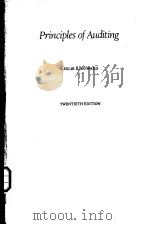《PRINCIPLES OF AUDITING TWELFTH EDITION》
| 作者 | O.RAY WHITTINGTON KURT PANY 编者 |
|---|---|
| 出版 | 未查询到或未知 |
| 参考页数 | 790 |
| 出版时间 | 1998年(求助前请核对) 目录预览 |
| ISBN号 | 无 — 求助条款 |
| PDF编号 | 819585678(仅供预览,未存储实际文件) |
| 求助格式 | 扫描PDF(若分多册发行,每次仅能受理1册) |
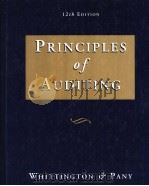
1The Role of the Auditor in the American Economy1
What Is the Attest Function?2
Financial Statement Audits4
What Creates the Demand for Audits?6
Major Auditing Developments of the 20th Century8
Types of Audits11
Types of Auditors12
The Public Accounting Profession13
American Institute of Certified Public Accountants13
The CPA Examination16
State Boards of Accountancy16
Financial Accounting Standards Board16
Governmental Accounting Standards Board17
Securities and Exchange Commission17
Other Types of Professional Services18
Organization of the Public Accounting Profession19
Industry Specialization—The Wave of the Future20
Responsibilities of the Professional Staff21
Professional Development for CPA Firm Personnel22
Seasonal Fluctuations in Public Accounting Work23
Relationship with Clients23
2Professional Standards32
Generally Accepted Auditing Standards (GAAS)33
Application of Auditing Standards34
Training and Proficiency34
Independence34
Due Professional Care35
Standards of Field Work—Accumulating and Evaluating Evidence35
Adequate Planning and Supervision35
Sufficient Understanding of Internal Control35
Sufficient Competent Evidential Matter35
Standards of Reporting36
Statements on Auditing Standards(SASs)36
The Auditors’ Responsibility for Detecting Misstatements37
Errors and Fraud38
Illegal Acts by Clients38
The Auditors’ Report39
The Introductory Paragraph of the Auditors’ Report40
The Scope Paragraph of the Auditors’Report41
The Opinion Paragraph of the Auditors’ Report41
Generally Accepted Accounting Principles (GAAP)43
Other Types of Auditors’ Reports45
The Attestation Standards45
The Assurance Function47
Quality Control in CPA Firms47
Division for CPA Firms48
The Public Oversight Board49
Peer Reviews50
International Accounting and Auditing Standards50
3Professional Ethics61
The Nature of Ethics62
What Are Ethical Dilemmas?62
A Framework for Ethical Decisions62
Making Ethical Decisions—A Professional Example63
The Need for Professional Ethics66
Professional Ethics in Public Accounting67
The AICPA Code of Professional Conduct68
Section Ⅰ—Principles69
Preamble69
Article Ⅰ—Responsibilities69
Article Ⅱ—The Public Interest69
Article Ⅲ—Integrity70
Article Ⅳ—Objectivity and Independence70
Article Ⅴ—Due Care70
Article Ⅵ—Scope and Nature of Services70
Section Ⅱ—Rules70
Applicability70
Rule 101—Independence70
Analysis of Independence72
Rule 102—Integrity and Objectivity77
Analysis of Integrity and Objectivity77
Rule 201—General Standards78
Analysis of General Standards78
Rule 202—Compliance with Standards78
Analysis of Compliance with Standards78
Rule 203 —Accounting Principles79
Analysis of Accounting Principles80
Rule 301—Confidential Client Information80
Analysis of Confidential Client Information80
Rule 302 —Contingent Fees81
Analysis of Contingent Fees82
Rule 501—Acts Discreditable82
Analysis of Acts Discreditable82
Rule 502 —Advertising and Other Forms of Solicitation83
Analysis of Advertising and Other Forms of Solicitation83
Rule 504—Commissions and Referral Fees83
Analysis of Commissions and Referral Fees84
Rule 505 —Form of Organization and Name84
Analysis of Form of Organization and Name84
The CPA as Tax Adviser—Ethical Problems85
Enforcement of Professional Ethics86
Ethics for Internal Auditors86
4Legal Liability of Auditors97
Unique Vulnerability of Accountants to Lawsuits98
Definitions of Terms98
Litigation Placed in Perspective98
Auditors’ Liability to Their Clients under Common Law101
Auditors’ Common Law Liability to Third Parties103
Ultramares Approach103
Restatement of Torts Approach104
Rosenblum Approach104
Joint and Several Liability105
Liability to Third Parties under Statutory Law106
Securities Act of 1933106
Securities Exchange Act of 1934108
Comparison of the 1933 and 1934 Acts110
The Racketeer Influenced and Corrupt Organizations Act111
Auditors’ Criminal Liability under the Securities Acts112
The SEC’s Regulation of Accountants113
Accountants’ Liabityty for Accounting and Review Services113
The CPAs’ Posture in the Age of Litigation115
5Audit Evidence128
The Relationship of Audit Risk to Evidence129
Financial Statement Asseerions129
Audit Risk at the Asseerion Level130
Audit Risk Illustrated131
Measuring Audit Risk131
Audit Evidence133
Types of Evidence134
Audit Procedures141
The Nature of Audit Procedures141
Timing of Audit Procedures141
Extent of Audit Procedures141
The Cost of Audit Procedures141
Analytical Procedures143
Developing an Expectation143
Timing of Analytical Procedures147
Extent of Analytical Procedures148
Evidence on Accounting Estimates148
Evidence on Related Party Transactions149
6Planning the Audit; Designing Audit Programs162
Client Acceptance163
Communication with Predecessor Auditors164
Other Communications165
Other Considerations in Accepting an Audit Client165
Obtaining the Engagement165
Audit Committees166
Fee Arrangements166
Engagement Letters167
Audit Planning167
Obtaining an Understanding of the Client’s Business167
Developing an Overall Audit Strategy170
Audit Plans181
Time Budgets for Audit Engagements181
Planning a Recurring Engagement182
Designing Audit Programs183
The Audit Trail183
Organization of the Audit Program184
Objectives of Audit Programs187
General Objectives of Audit Programs for Asset Accounts188
Substantiation of Account Balances188
Existence of Assets188
Rights to the Assets189
Establishing Completeness189
Valuation of Assets190
Clerical Accuracy of Records190
Financial Statement Presentation and Disclosure191
An Illustration of Audit Program Design191
Audit Process191
Timing of Audit Work194
Appendix 6A:Selected Internet Addresses205
Appendix 6B:Illustrative Audit Case205
Part 1:Audit Planning205
7Internal Control216
The Meaning of Internal Control217
The Foreign Corrupt Practices Act of 1977219
Means of Achieving Internal Control219
The Control Environment219
Integrity and Ethical Values220
Commitment to Competence220
Board of Directors or Audit Committee220
Management Philosophy and Operating Style220
Organizational Structure221
Assignment of Authority and Responsibityty223
Human Resource Policies and Procedures223
Risk Assessment224
The Accounting Information and Communication System225
Control Activities225
Performance Reviews226
Information Processing226
Physical Controls227
Segregation of Duties228
Monitoring229
The Internal Audit Function229
Limitations of Internal Control229
The Auditors’ Consideration of Internal Control230
Obtaining an Understanding of Internal Control to Plan the Audit230
Assess Control Risk239
Decision Aids for Audit Program Modification241
Consideration of the Work of Internal Auditors244
Communication of Control Related Matters245
Internal Control in the Small Company245
8Consideration of Intern Control in a Computer Environment260
Nature of Computer Systems261
Characteristics of Various Types of Computer Systems262
Impact of Computers on the Audit Trail265
Internal Control in a Computer Environment266
Organizational Structure of the Information System Function266
Computer-Centered Fraud269
Internal Auditing in a Computer Environment271
Control Activities in a Computer System271
General Control Activities272
Application Control Activities275
User Control Activities276
Control in Microcomputer Systems277
The Auditors’ Consideration of Internal Control in a Computer Environment277
Obtaining an Understanding of Computerized InternControl278
Documenting Computerized Internal Control278
Assessing Control Risk—Testing Computer System Controls280
Substantive Testing with Computers286
Using Audit Software:An Illustration287
Computer Service Centers and Outsourced Computer Processing287
9Audit Sampling299
Comparison of Statistical and Nonstatistical Sampling300
Selecting a Random Sample301
Other Methods of Sample Selection304
Stratification304
Types of Statistical Sampling Plans305
Allowance for Sampling Risk(Precision)306
Sample Size307
Audit Sampling for Tests of Controls307
Sampling Risk for Tests of Controls307
Attributes Sampling308
Determine the Objective of the Test309
Define the Attributes and “Deviation” Conditions309
Define the Population310
Specify the Risk of Assessing Control Risk Too Low and the Tolerable Deviation Rate310
Estimate the Expected Population Deviation Rate311
Determine the Sample Size311
Select the Sample313
Test the Sample Items313
Evaluate the Sample Results313
Document the Sampling Procedure315
Detailed Illustration of Attributes Sampling315
Other Statistical Attributes Sampling Approaches317
Nonstatistical Attributes Sampling319
Audit Sampling for Substantive Tests320
Sampling Risk for Substantive Tests320
Classical Variables Sampling321
Mean-per-Unit Estimation321
Controlling Sampling Risk321
Determination of Sample Size322
Evaluation of Sample Results324
Illustration of Mean-per-Unit Estimation324
Ratio and Difference Estimation328
Illustration of Ratio and Difference Estimation329
Nonstatistical Sampling for Substantive Tests330
Illustration of Nonstatistical Sampling331
Appendix 9A:Probability-Proportional-to-Size (PPS) Sampling343
Determination of Sample Size343
Controlling Sampling Risk344
Method of Sample Selection344
Evaluation of Sample Results345
Illustration of PPS Sampling346
Considerations in Using PPS Sampling348
Appendix 9B:Audit Risk349
10 Audit Working Papers; Examination of the General Records355
What Are Audit Working Papers?356
Functions of Working Papers356
Confidential Nature of Working Papers358
Ownership of Audit Working Papers358
Working Papers and Auditors’ Liability358
Types of Working Papers360
Organization of the Working Papers362
Guidelines for Preparation of WorkingPapers363
Computer-Generated Working Papers365
The Review of Audit Working Papers365
Examination of the General Records368
Articles of Incorporation and Bylaws369
Partnership Contract369
Corporate Minutes Book369
Contracts Held or Issued by Client371
Laws and Regulations372
Correspondence Files374
Income Tax Returns of Prior Years374
Financial Statements and Annual Reports of Prior Years374
Reports to the SEC375
Review and Testing of the Accounting Records375
The General Ledger376
The General Journal377
Audit Working Papers for the Examination of Accounting Records379
11 Cash and Marketable Securities391
Cash392
Sources and Nature of Cash392
The Auditors’ Objectives in the Audit of Cash392
How Much Audit Time for Cash?394
Internal Control over Cash Transactions394
Internal Control over Cash Receipts395
Internal Control over Cash Disbursements397
Internal Control and the Computer403
Audit Working Papers for Cash403
Audit Program for Cash403
Interim Audit Work on Cash417
Marketable Securities417
The Auditors’ Objectives in Examination of Marketable Securities417
Internal Control over Marketable Securities418
Internal Control Questionnaire419
Audit Program for Securities420
Substantive Tests for Investments in Securities420
12 Accounts Receivable,Notes Receivable,and Sales Transactions436
Receivables437
Sources and Nature of Accounts Receivable437
Sources and Nature of Notes Receivable437
The Auditors’ Objectives in Auditing Receivables and Sales437
Internal Control of Sales Transactions and Accounts Receivable438
Internal Control over Notes Receivable444
Internal Control and the Computer444
Audit Working Papers for Receivables and Sales445
Audit Program for Receivables and Sales Transactions445
Interim Audit Work on Receivables and Sales468
Appendix 12A Illustrative Audit Case:Key-stone Computers & Networks,Inc480
Part Ⅱ:Consideration of Internal Control480
Obtaining and Documenting an Understanding of the Sales and Collections Cycle481
Testing Controls and Assessing Control Risk481
Appendix 12B Illustrative Audit Case:Keystone Computers & Networks,Inc.495
Part Ⅲ:Substantive Tests—Accounts Receivable and Sales495
13 Inventories and Cost of Goods Sold499
Sources and Nature of Inventories and Cost of Goods Sold500
The Auditors’ Approach to Auditing Inventories and Cost of Goods Sold500
Internal Control over Inventories and Cost of Goods Sold502
Internal Control and the Computer507
Audit Working Papers for Inventories and Cost of Goods Sold507
Audit Program for Inventories and Cost of Goods Sold508
Problems Associated with Inventory of First Year Audit Clients528
14 Property,Plant,and Equipment:Depreciation and Depletion540
The Auditors’ Approach to Auditing Property,Plant,and Equipment541
Contrast with Audit of Current Assets541
Internal Control over Plant and Equipment542
Audit Working Papers543
Initial Audits and Repeat Engagements545
Audit Program for Property,Plant,and Equipment545
Depreciation554
The Auditors’ Perspective Toward Depreciation554
The Auditors’ Objectives in Auditing Depreciation555
Audit Program—Depreciation Expense and Accumulated Depreciation555
Testing the Client’s Provision for Depreciation556
Examination of Natural Resources556
Examination of Intangible Assets557
Examination of Plant and Equipment in Advance of the Balance Sheet Date558
15 Accounts Payable and Other Liabilities567
Accounts Payable568
Sources and Nature of Accounts Payable568
The Auditors’ Approach to Auditing Accounts Payable568
Internal Control over Accounts Payable569
Internal Control and the Computer571
Audit Working Papers for Accounts Payable571
Audit Program571
Other Liabilities585
Amounts Withheld from Employees’Pay585
Sales Tax Payable586
Unclaimed Wages586
Customers’ Deposits586
Accrued Liabilities587
Balance Sheet Presentation590
Time of Examination591
Appendix 15A Illustrative Audit Case:Keystone Computers & Networks,Inc.599
Part Ⅳ:Consideration of Internal Control599
16 Debt and Equity Capital603
Interest-Bearing Debt604
Sources and Nature of Interest-Bearing Debt604
The Auditors’ Approach to Auditing Interest-Bearing Debt604
Internal Control over Interest-Bearing Debt605
Audit Working Papers606
Audit Program for Interest-Bearing Debt606
Time of Examination—Interest-Bearing Debt613
Equity Capital614
Sources and Nature of Owners’ Equity614
The Auditors’ Approach to Auditing Owners’ Equity614
Internal Control over Owners’ Equity614
Control of Capital Stock Transactions by the Board of Directors615
Independent Registrar and Stock Transfer Agent615
The Stock Certificate Book and Stockholders Ledger616
Internal Control over Dividends616
Audit Working Papers for Owners’Equity617
Audit Program—Capital Stock617
Retained Earnings and Dividends620
Time of Examination—Stockholders’Equity621
Financial Statement Presentation of Stockholders’ Equity622
Audit of Sole Proprietorships and Partnerships622
17 Auditing Operations and Completing the Audit633
Auditing Operations634
The Auditors’ Approach to Examining Operations634
Revenue635
Relationship of Revenue to Balance Sheet Accounts635
Miscellaneous Revenue635
Expenses636
Relationship of Expenses to Balance Sheet Accounts636
Substantive Tests for Selling,General,and Administrative Expenses636
The Audit of Payroll638
Internal Control over Payroll641
Description of Internal Control for Payroll643
Audit Program for Payrolls643
Audit of the Statement of Cash Flows645
Completing the Audit645
Search for Unrecorded Liabilities646
Review the Minutes of Meetings646
Perform Final Analytical Procedures646
Perform Procedures to Identify Loss Contingencies646
Perform the Review for Subsequent Events651
Obtain Representation Letter655
Evaluating Audit Findings655
Reviewing the Engagement656
Responsibilities for Other Information in the Financial Report658
Opinion Formulation and Report Issuance659
Communicating with the Audit Committee660
Post-Audit Responsibilities660
The Auditors’ Subsequent Discovery of Facts Existing at the Date of Their Report660
Subsequent Discovery of Omitted Audit Procedures661
18 Auditors’ Reports674
Financial Statements675
Financial Statement Disclosures676
Comparative Financial Statements676
The Auditors’ Standard Report677
Expression of an Opinion678
The Unqualified Opinion679
Explanatory Language Added to the Auditors’ Report678
Qualified Opinions684
Adverse Opinions687
Disclaimer of Opinion688
Summary of Auditors’ Reports690
Two or More Report Modifications690
Different Opinions on DifferentStatements693
Reporting on Comparative Financial Statements693
Reports to the SEC694
19 Other Attestation and Accounting Services710
The Attestation Function712
Attestation Engagements—Historical Financial Information713
Special Reports713
Financial Statements Prepared for Use in Other Countries718
Audits of Personal Financial Statements718
Reviews of the Interim Information of Public Companies719
Review Services for Nonpublic Companies722
Accountants’ Reports on Comparative Statements725
Letters for Underwriters726
Condensed Financial Statements726
Attestation Engagements—Other Information727
Prospective Financial Statements727
Reporting on a Company’s Internal Control729
Other Agreed-Upon Procedures Engagements732
Accounting Services732
Compilation Engagements for Financial Statements of Nonpublic Companies732
Other “Association” with the Financial Statements of Public Companies735
Compilations of Prospective Financial Statements736
Summary of Reporting736
20 Internal,Operational,and Compliance Auditing749
Internal Auditing750
What Is the Purpose of Internal Auditing?750
Evolution of Internal Auditing750
Professional Standards of Internal Auditing752
Certification of Internal Auditors755
Operational Auditing756
Objective of Operational Audits756
General Approach to Operational Audits757
Compliance Auditing759
Attesting to Compliance with Laws and Regulations760
Compliance Auditing of Federal Financial Assistance Programs764
Audits in Accordance with Generally Accepted Auditing Standards764
Audits in Accordance with Government Auditing Standards765
Audits in Accordance with the Single Audit Act767
Compliance Auditing—A Summary771
Index781
1998年《PRINCIPLES OF AUDITING TWELFTH EDITION》由于是年代较久的资料都绝版了,几乎不可能购买到实物。如果大家为了学习确实需要,可向博主求助其电子版PDF文件。对合法合规的求助,我会当即受理并将下载地址发送给你。
高度相关资料
-

- AN INDEX OF TREATMENT TWELFTH EDITION
- 1940 JOHN WRIGHT AND SONS LTD
-

- Principles of Marketing Twelfth Edition
- Gary Armstrong"
-

- Principles of Human Physiology Twelfth Edition
- 1956 J.& A.Churchill Ltd.
-
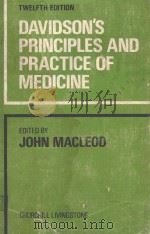
- DAVIDSON'S PRINCIPLES AND PRACTICE OF MEDICINE TWELFTH EDITION
- 1977 CHURCHILL LIVINGSTONE
-

- INTERNATIONAL HANDBOOK OF UNIVERSITIES TWELFTH EDITION
- 1991 STOCKTON PRESS
-
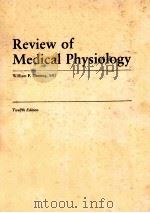
- REVIEW OF MEDICAL PHYSIOLOGY TWELFTH EDITION
- 1985 LANGE MEDICAL PUBLICATIONS
-

- Roe's Principles of Chemistry TWELFTH EDITION
- 1976 The C.V.Mosby Company
-
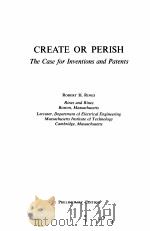
- CREATE OR PERISH:THE CASE FOR INVENTIONS AND PATENTS
- 1964 PRELIMINARY EDITION
-
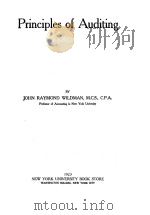
- PRINCIPLES OF AUDITING
- 1923 NEW YORK UNIVERSITY BOOK STORE
-

- OUTLINES OF CRIMINAL LAW TWELFTH EDITION
- 1926 AT THE UNIVERSITY PRESS
提示:百度云已更名为百度网盘(百度盘),天翼云盘、微盘下载地址……暂未提供。➥ PDF文字可复制化或转WORD
